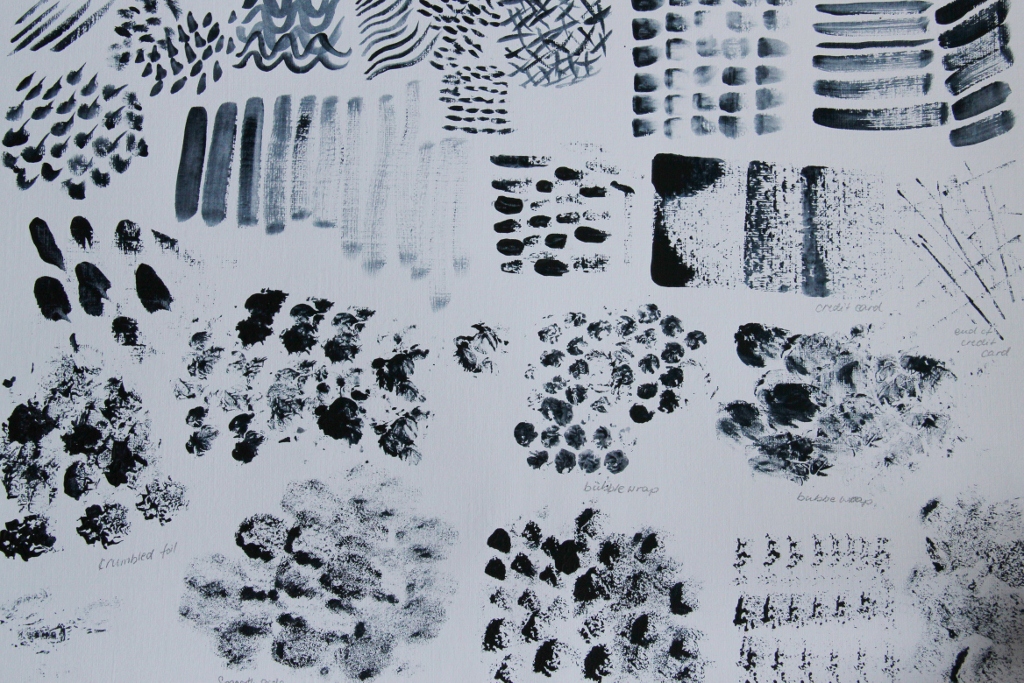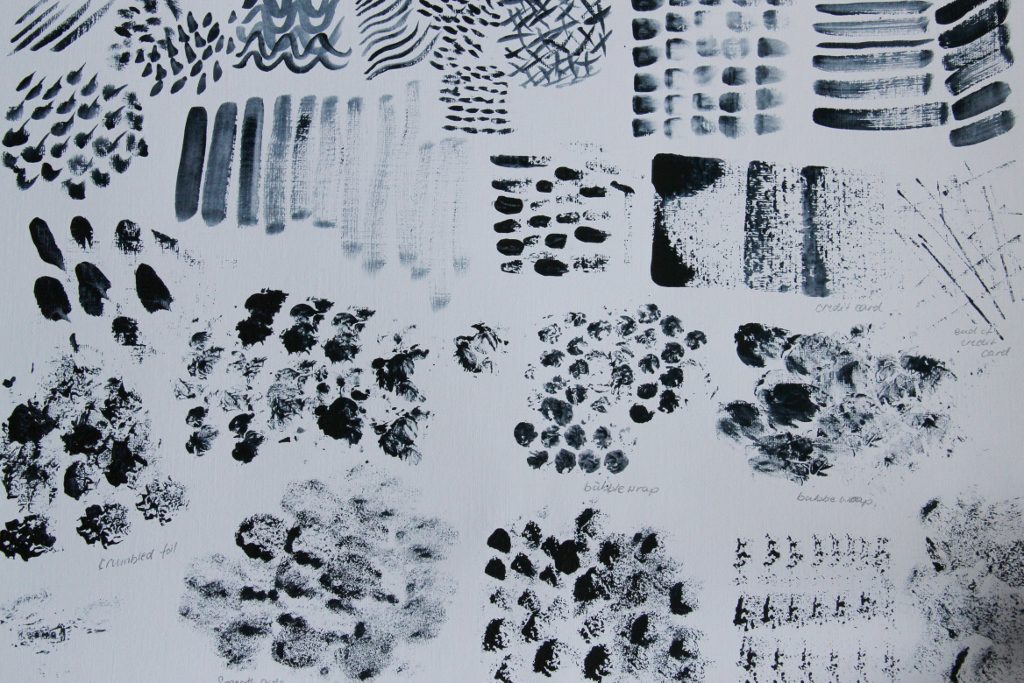- What is mark making? And what can be used to do it?
Mark making is a term used to describe the different lines, patterns, and textures we create in an artwork.
It applies to any art material we use on any surface. A dot made with a pencil, a line created with a pen, a swirl painted with a brush, these are all types of mark making.
https://www.youtube.com/watch?v=WZ5ConE6kgM
The above link is a brief video on how mark making can be done. The ways of mark making are free and limitless!
 Mark making can be loose and gestural, or structured and controlled. Zen-like doodles, expressive and emotive paint throwing techniques and simply rubbing a stick/ comb/ toilet brush (??) through some acrylic paint are just some of the many creative ways mark making can be done!
Mark making can be loose and gestural, or structured and controlled. Zen-like doodles, expressive and emotive paint throwing techniques and simply rubbing a stick/ comb/ toilet brush (??) through some acrylic paint are just some of the many creative ways mark making can be done!
But in Project 1 “My line is emo”; my project restricts me to have a black and white outcome in the end, as well as avoiding illustrating emotions literally or creating anything representational… Come on now brain, time for my creative juices to start flowing through my Factory of Creations~
Come on now brain, time for my creative juices to start flowing through my Factory of Creations~
- When has mark making been introduced?

According to the trustworthy search engine: Google, it seems like there is no exact date as to when mark making was officially introduced. It just happened! So in my assumptions, I suppose mark making began when mankind discovered art! Because making patterns or tracing your fingers with a medium that shows a physical and permanent mark, is after all a pictorial attempt at mark making isn’t it? 
- Where and when has mark making been used?

Mark making has been used frequently as an expressive leisure form of art work, art therapy as well as a form of expression and development for children during early childhood.
According to the book ‘Navigating Art Therapy: A Therapist’s Companion’ by Chris Wood, mark making has served as a form of therapy for the physical, spiritual and mental health for humans.
“Indigenous mark-making has been associated, since prehistoric times, with understanding the connections between interior and exterior. Spiritual and religious rituals have also used mark making in aspects concerning health, healing and the sustaining of life.”
-Page 16, Navigating Art Therapy: A Therapist’s Companion by Chris Wood
- Who has done Mark Making?
Mark making has been done by everyone in one way or another, regardless of an accidental or intended attempts.
For instance, when you accidentally knocked your colored beverage onto your homework, and despite the momentary hysteria, you’re like, “Wow, this is a rather gorgeous splatter I have created by accident!” (true story).
Some artists who has taken mark making into the next level, and are very good at it are:
- Julie Mehretu, who makes large-scale, gestural paintings that are built up through layers of acrylic paint on canvas overlaid with mark-making using pencil, pen, ink and thick streams of paint

Kabul
2013
Graphite and acrylic on linen
96 x 144 in. (243.8 x 365.8 cm)
Mehretu’s work conveys a layering and compression of time, space and place and a collapse of art historical references, from the dynamism of the Italian Futurists and the geometric abstraction of Malevich to the enveloping scale of Abstract Expressionist color field painting.
In her highly worked canvases, Mehretu creates new narratives using abstracted images of cities, histories, wars and geographies with a frenetic mark making that for the artist becomes a way of signifying social agency as well suggesting an unravelling of a personal biography.
- Yves Klein was a showman and one of his most famous events was the imprinting of paper with naked models smeared with blue paint, as he directed their performance to music.
 Grande Anthropophagie bleue
Grande Anthropophagie bleue
Hommage à Tennessee Williams, 1960
(Large blue anthropophagy, Homage to Tennessee Williams)
Grande bataille [Great battle]
Pure pigment and synthetic resin
on paper marouflaged to canvas -276 x 418 cm
The Grande Anthropophagie bleue. Hommage a Tennessee Williams is an accurate reflection of the fragility and suffering. In reference to the final scene of Tennessee Williams’ Suddenly Last Summer, adapted for the screen by Joseph Mankiewics in 1959, the work is an expression of great violence by the chaos and force of its marks
Klein presented his work in forms that were recognized as art but would then take away the expected content of that form (paintings without pictures, a book without words, a musical composition without in fact composition) leaving only a shell. He wanted his subjects to be represented by their imprint: the image of their absence.
- Jackson Pollock was an influential American painter, and the leading force behind the abstract expressionist movement in the art world. His dripping technique (where he danced around the canvas in a trance like state) turned painting into a performance where the canvas bore witness to the act of painting and the resulting work represented an event (of painting) rather than an object.
 Pollock also incorporates the use of different unconventional mediums. Instead of using the traditional paint brush, he would add depth to his images using knives, trowels, sticks and even his own foot prints as part of the artwork, as he works while standing IN his monumental artwork. In that it had a direct relation to the artist’s emotions, expression, and mood, and showcased their feeling behind the pieces they designed. Thus, achieving different patterns and forms in midst of his expressive mark making.
Pollock also incorporates the use of different unconventional mediums. Instead of using the traditional paint brush, he would add depth to his images using knives, trowels, sticks and even his own foot prints as part of the artwork, as he works while standing IN his monumental artwork. In that it had a direct relation to the artist’s emotions, expression, and mood, and showcased their feeling behind the pieces they designed. Thus, achieving different patterns and forms in midst of his expressive mark making.

Jackson Pollock’s Autumn Rhythm (Number 30)
1950
Enamel on canvas
105 x 207 in. (266.7 x 525.8 cm)
With that, I conclude my first round of research into mark making.
Cheers!
Yi Ling 
References for research:
http://painting.about.com/od/artglossarym/g/definition-mark-making.htms
http://whitecube.com/artists/julie_mehretu/
http://www.jackson-pollock.org/autumn-rhythm.jsp
 Image 1: Spreading the mono-printing ink onto the lino-cut with the roller.
Image 1: Spreading the mono-printing ink onto the lino-cut with the roller. Image 2: Placing my mark making objects onto the wet lino-cut from Image 1.
Image 2: Placing my mark making objects onto the wet lino-cut from Image 1.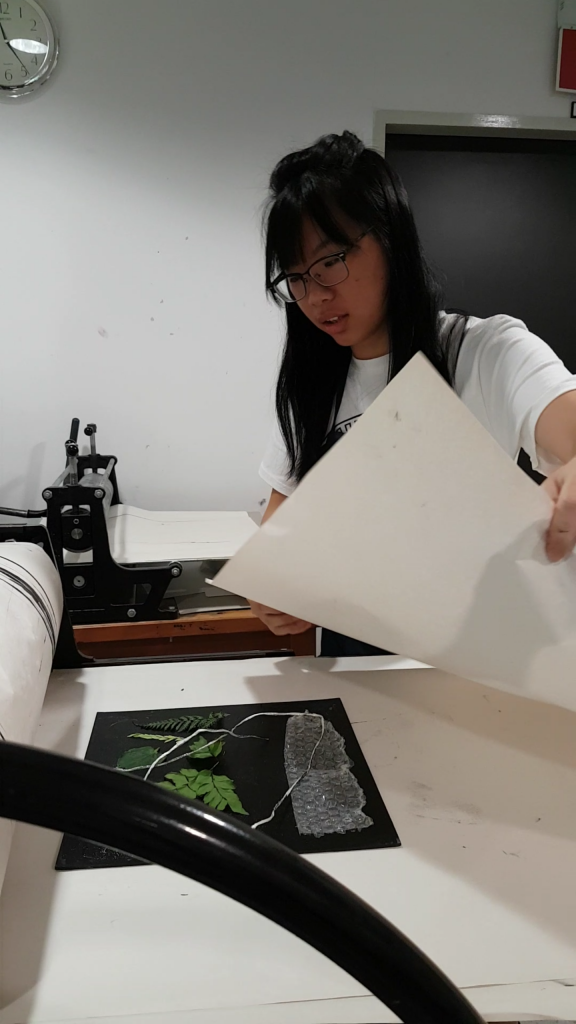 Image 3: Placing a piece of A2 newsprint paper on the lino-cut from Image 2.
Image 3: Placing a piece of A2 newsprint paper on the lino-cut from Image 2. Image 4: Covering my newsprint paper with a stack of A2 newsprint, which acts as a ‘Blanket’ to protect the roller machine from getting stained.
Image 4: Covering my newsprint paper with a stack of A2 newsprint, which acts as a ‘Blanket’ to protect the roller machine from getting stained. Image 5: Begin turning the wheel which moves the platform below it, rolling the A2 newsprint over the lino-cut.
Image 5: Begin turning the wheel which moves the platform below it, rolling the A2 newsprint over the lino-cut.
 Image 7: After gently removing the mark making tools, place another clean A2 Newsprint on top of the lino-cut and repeat the step in Image 6 to achieve a detailed print of the mark making tools!
Image 7: After gently removing the mark making tools, place another clean A2 Newsprint on top of the lino-cut and repeat the step in Image 6 to achieve a detailed print of the mark making tools!

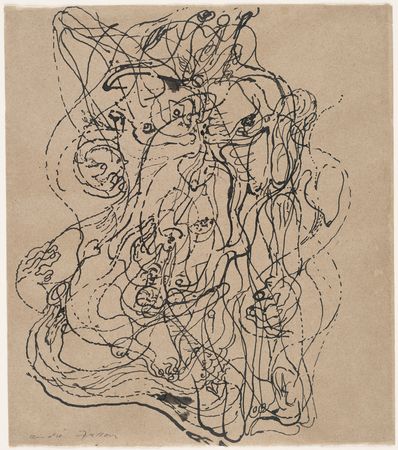
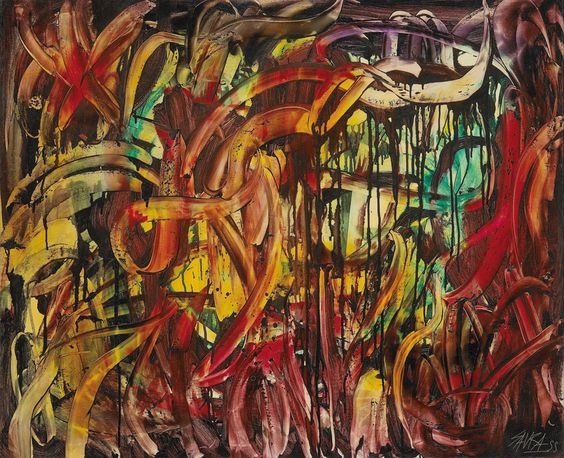


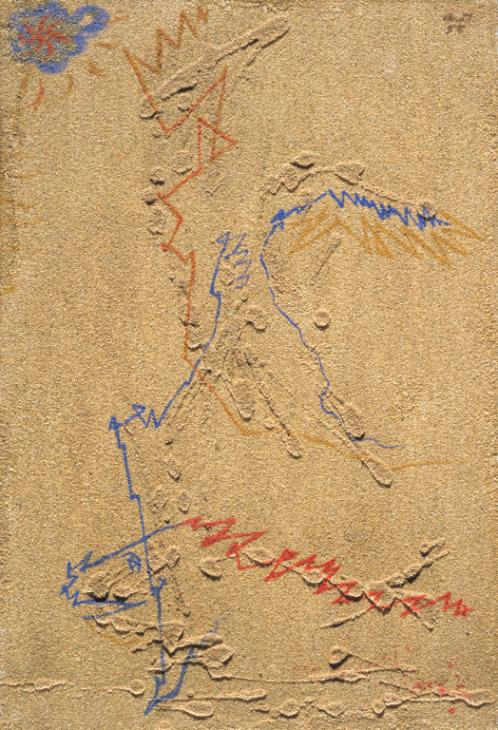
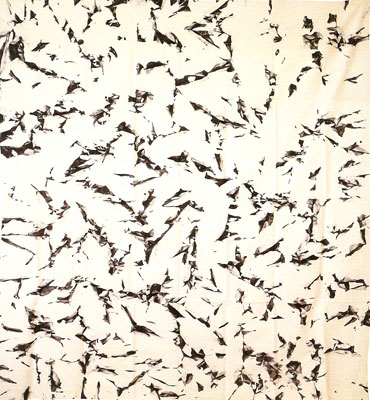




 Mark making can be loose and gestural, or structured and controlled. Zen-like doodles, expressive and emotive paint throwing techniques and simply rubbing a stick/ comb/ toilet brush (??) through some acrylic paint are just some of the many creative ways mark making can be done!
Mark making can be loose and gestural, or structured and controlled. Zen-like doodles, expressive and emotive paint throwing techniques and simply rubbing a stick/ comb/ toilet brush (??) through some acrylic paint are just some of the many creative ways mark making can be done! Come on now brain, time for my creative juices to start flowing through my Factory of Creations~
Come on now brain, time for my creative juices to start flowing through my Factory of Creations~



 Pollock also incorporates the use of different unconventional mediums. Instead of using the traditional paint brush, he would add depth to his images using knives, trowels, sticks and even his own foot prints as part of the artwork, as he works while standing IN his monumental artwork. In that it had a direct relation to the artist’s emotions, expression, and mood, and showcased their feeling behind the pieces they designed. Thus, achieving different patterns and forms in midst of his expressive mark making.
Pollock also incorporates the use of different unconventional mediums. Instead of using the traditional paint brush, he would add depth to his images using knives, trowels, sticks and even his own foot prints as part of the artwork, as he works while standing IN his monumental artwork. In that it had a direct relation to the artist’s emotions, expression, and mood, and showcased their feeling behind the pieces they designed. Thus, achieving different patterns and forms in midst of his expressive mark making.

